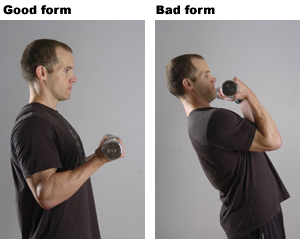
The amount of weight you lift is best dictated by your fitness goals of strength, size or endurance - and not your weight or height.
Fairly often, I get emails from guys and gals with a common question: Based on my weight and height, how much weight should I be lifting?
As it turns out, there’s no magic formula. Instead, the amount of weight that you lift needs to be based on your goals. More specifically, it’s based on the number of repetitions that your goal necessitates.
Here’s how it breaks down:
- If your goal is strength for a given muscle group, then you’ll want to complete 1 - 6 repetitions of each exercise.
- If your goal is size (or size and strength) for a given muscle group, then you’ll want to complete 7 - 12 repetitions of each exercise.
- If your goal is endurance for a given muscle group, then you’ll want to complete 12 - 15 repetitions of each exercise.
Since you’ll want to be fatigued on the last repetition, the number of repetitions clearly dictates the amount of weight that you need to lift. For example, if I were training for strength, I could perform 5 bicep curls with 65 pound dumbbells. But if I was training for endurance, I’d need to opt for 45 pound dumbbells to complete 15 solid repetitions.
Also, keep in mind that in order to progress toward your goals, you’ll want to add more weight over time. If you find yourself getting too comfortable (or able to perform two extra repetitions on your last set for two consecutive workouts), it’s time to increase the weight.
You’ll often hear people say that you should be able to curl or lift or press a certain percentage of your bodyweight, but here’s the truth: The amount of weight that you use is best dictated by your fitness goals of strength, size or endurance - and not your weight or height.










